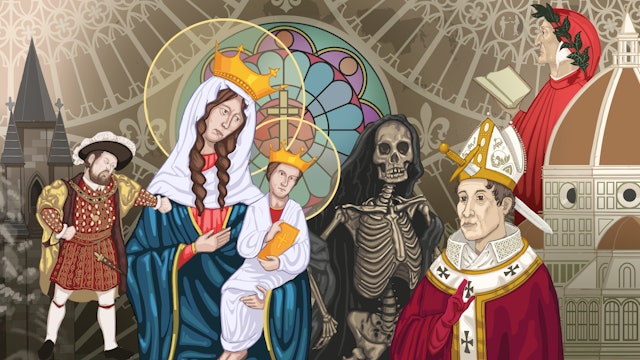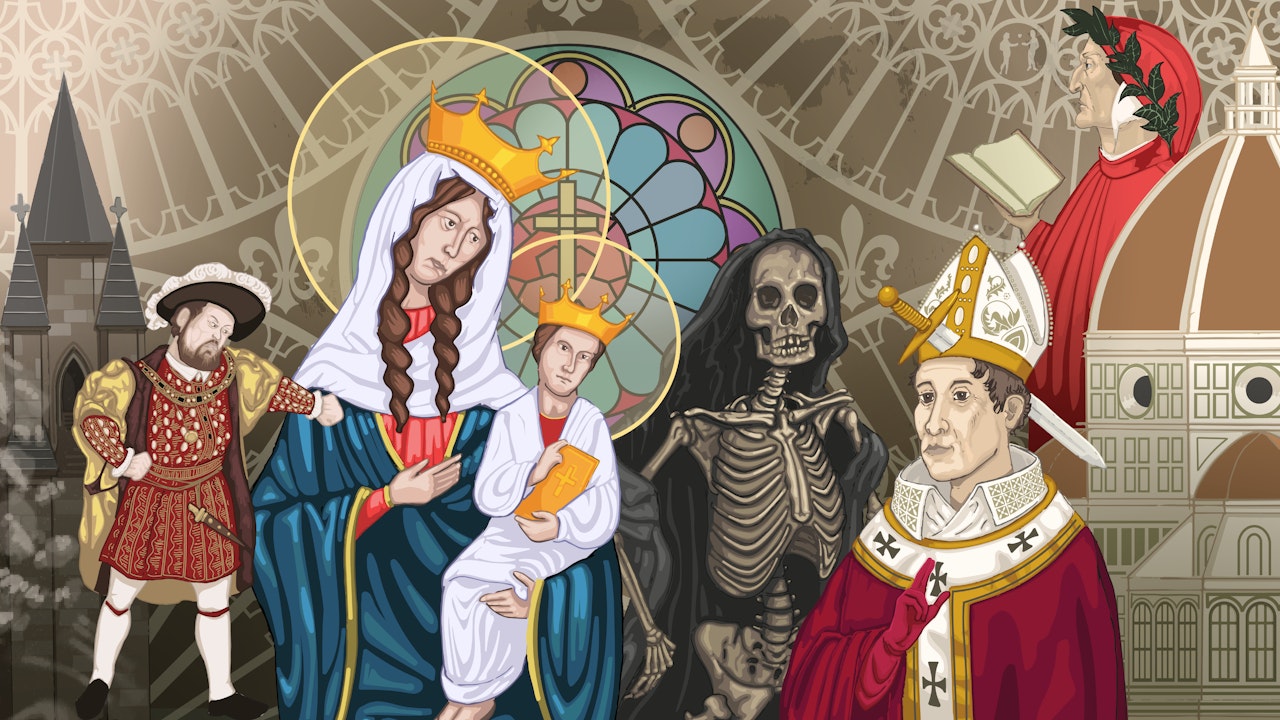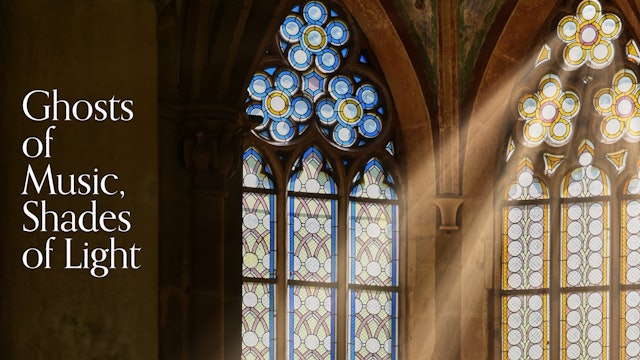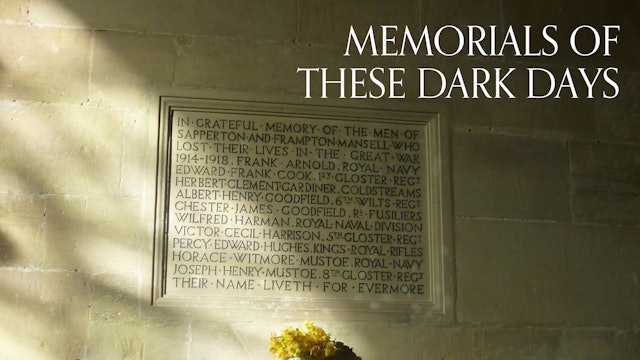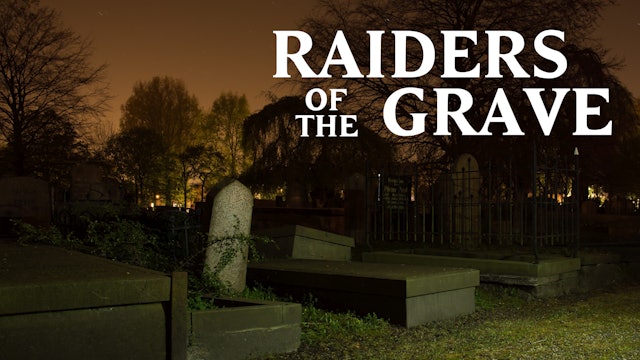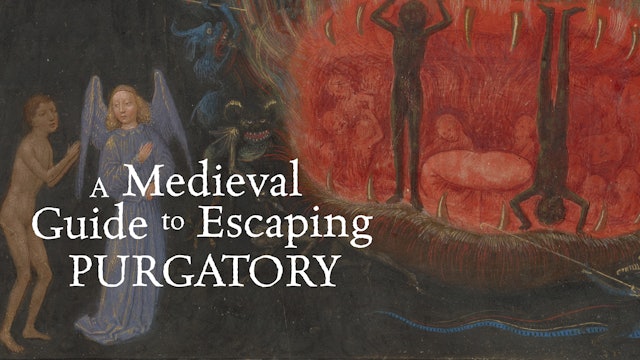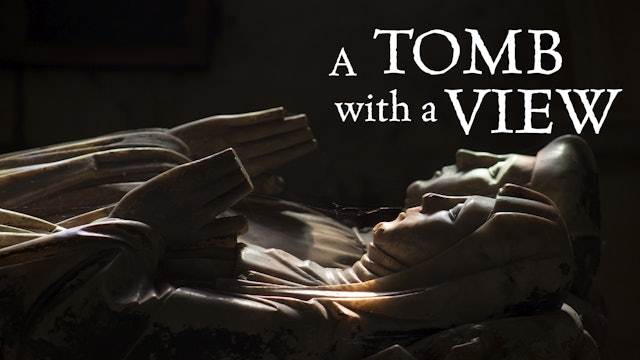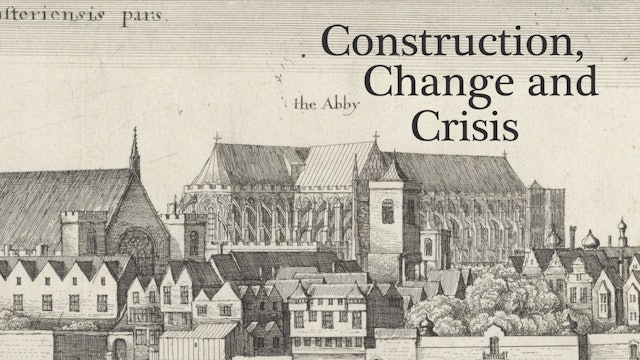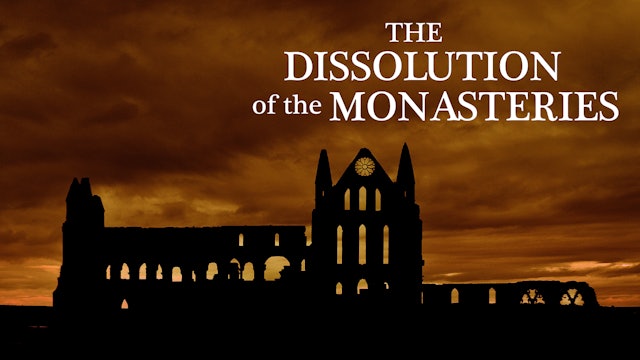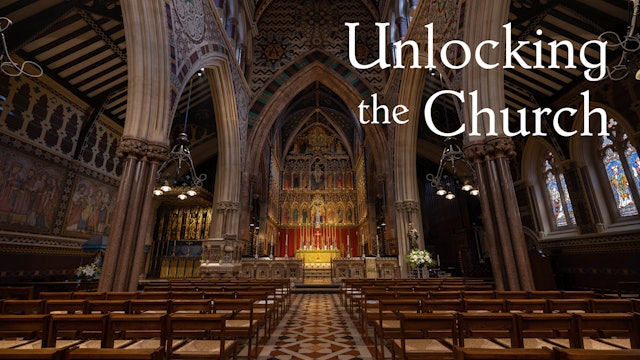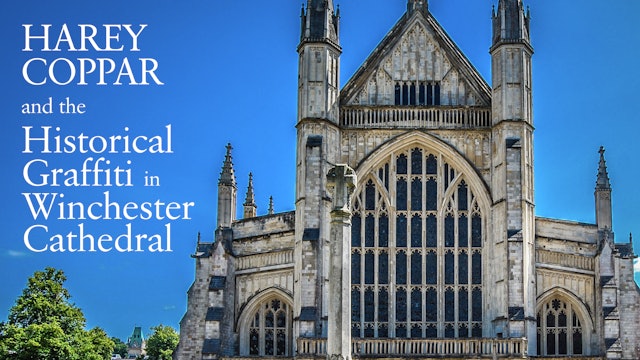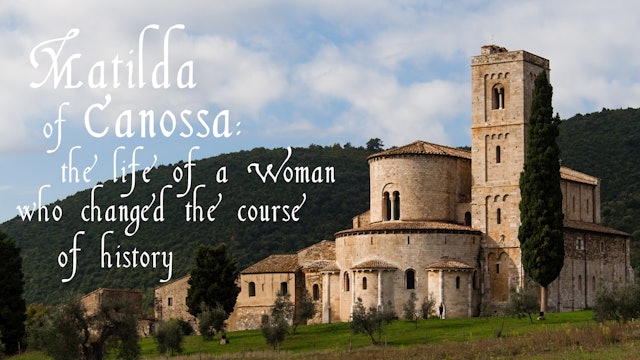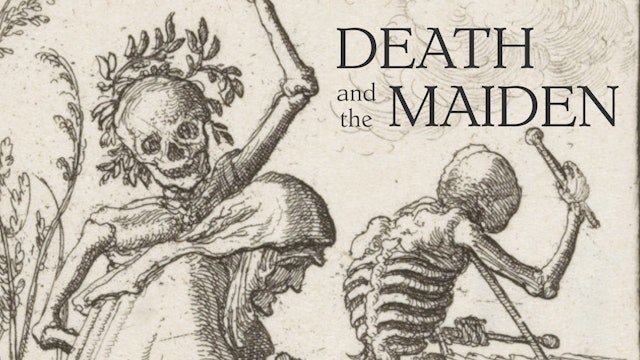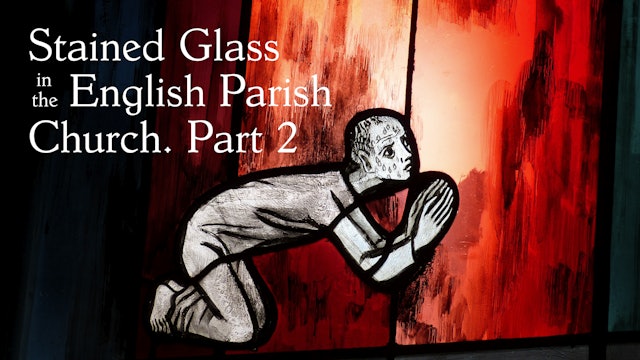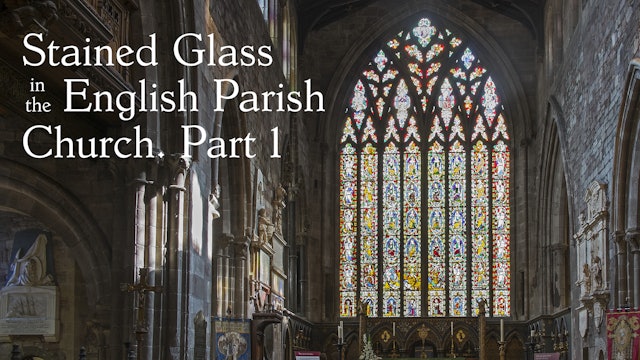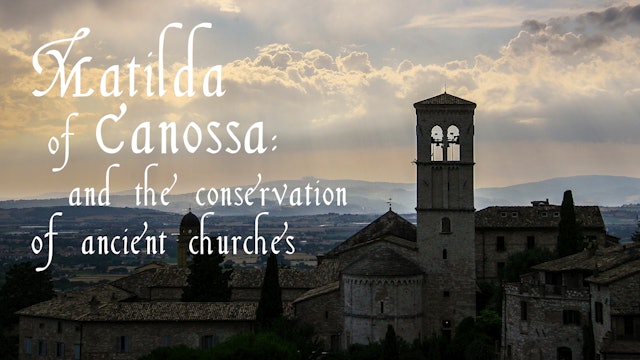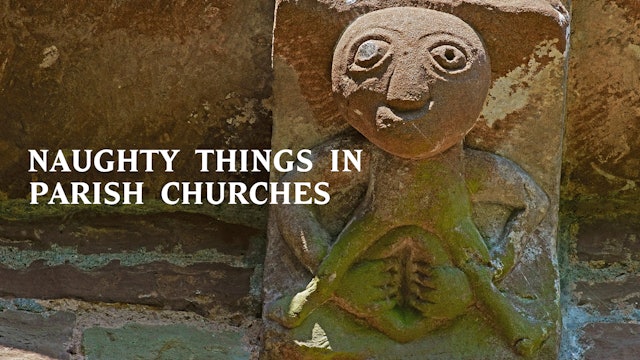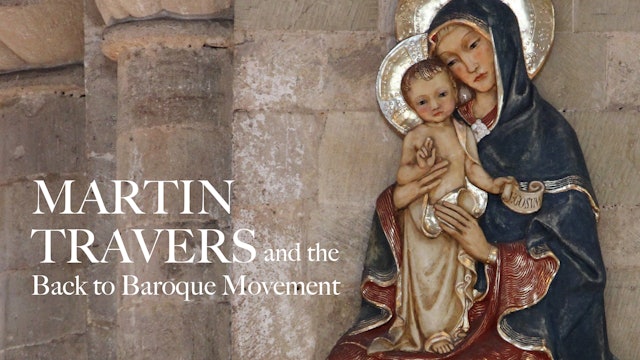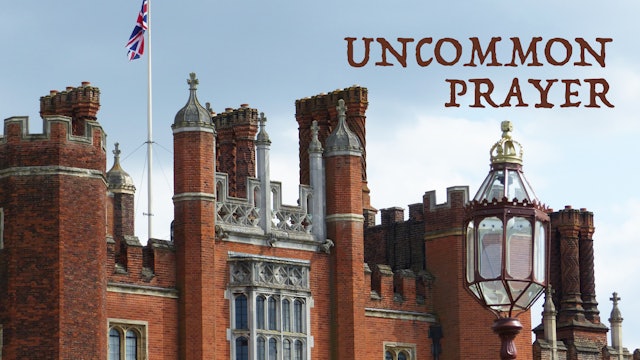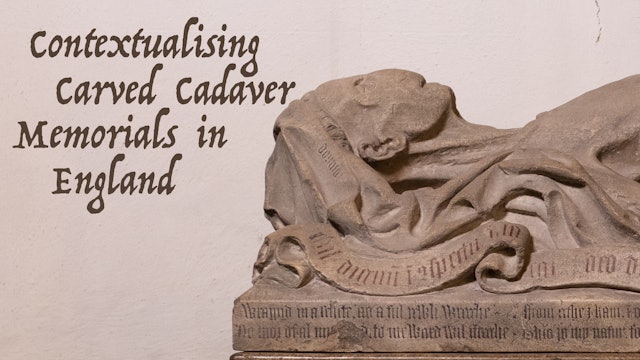Our Free Lectures
Whoever said churches were dull and boring clearly hasn't been following our weekly lecture series. Our free lectures take place live every Thursday online, but you can catch up on every single one right here. Our lectures explore everything from art, architecture, history, politics to even some pretty weird and wonderful topics too! Explore and watch them all here.
-
Angels: a history
'In a 2016 poll, one in 10 Britons claimed to have experienced the presence of an angel, while one in three remain convinced that they have a guardian angel. These are huge numbers and mean that, on some counts, angels are doing better than God.’
In his latest book which launches on 3rd December...
-
Christmas Ghosts
For centuries, the telling of ghost stories was an activity associated with the Twelve Days of Christmas - the period between Christmas Eve and Twelfth Night (Epiphany), when households would feast through the long winter nights and entertain one another with chilling tales. The tradition survive...
-
Ghosts of Music, Shades of Light: The use of the Parish Church
By taking us through a normal day in the life of an average parish church, we will explore how medieval churches were used on a daily basis and why they were therefore designed and built as they were – and then why they were modified as time went on (an aspect that frequently puzzled Pevsner) bec...
-
The Box of Whistles: a short history of English church organs, 1500-1900
Pipe organs have been used in English parish churches for more than a thousand years. Early organs were often small and portable. Their use changed radically at the time of the Reformation. Later organs grew in size, becoming permanent features of church buildings with architectural casework and ...
-
Memorials of The Darks Days: Arts and Crafts First World War Memorials
The First World War saw an outpouring of grief like nothing England had seen before. Most communities had lost people, and all wanted a lasting memorial to those who were gone. It brought art to the forefront of the British public’s mind, and was thus a business opportunity like no other for arch...
-
Making Headway with a Headstone: How to Look Beneath and Beyond
For the dead who could afford a grave marker, the information chiseled or inscribed on them about the lives that lay beneath is often limited. Their name, birth, death, a short passage of poetry or a biblical except - and that's it. What about their favourite piece of music? Their favourite colou...
-
Raiders of the Grave
Between 1742 and 1832, men of the lowest form of character targeted Britain’s churchyards for perhaps one of the most macabre practices you’ll ever come across.
Resurrection men or body snatchers, plagued our churchyards and stole our dead all in the name of science. Providing a fresh and steady...
-
A Medieval Guide To Escaping Purgatory
The medieval concept of Purgatory as the Third Place led to a number of ways that medieval men and women attempted to mitigate its expected horrors. This lecture will consider how they were able to do this, in life and after their own deaths. Many physical remains of this belief survive, but are ...
-
A Tomb with a View
View and learn about some of the most famous images of Death. Discover how they came about and how they worked, looking especially at Christian attitudes to the body, the role of fear, and the way art itself comes up with ideas.
This talk is given by Professor Paul Binski FBA. He is Professor of...
-
Construction, Change & Crisis: Church Building in the Shadow of the Black Death
In the middle of the fourteenth century, about half the population of England was killed when a new pestilence swept across Eurasia. Historians continue to discuss - and to dispute - the effects of this extraordinary disaster on the continent's culture, economics and politics. This talk does not ...
-
The Dissolution of the Monasteries
The Dissolution of the Monasteries is often characterised as a simple story of greed and appropriation enacted by Thomas Cromwell on behalf Henry VIII, which saw the religious evicted and all England's great abbeys and priories destroyed in less than a decade. Whilst clearly a devastating experie...
-
Unlocking the Church: The lost secrets of Victorian sacred space
The Victorians completely transformed our churches: not only building thousands, but restoring – which often meant rebuilding – thousands more. Still more importantly, they transformed how the British understood and experienced their churches. No longer mere receptacles for worship, churches beca...
-
Harey Coppar and the Historical Graffiti in Winchester Cathedral
Winchester Cathedral has a large amount of historical graffiti across all areas of this building, now nearly 1,000 years old. A survey and photographic record of this graffiti can be analysed to help an understanding of how this building has been used and viewed across the centuries by people who...
-
Matilda of Canossa: the life of a woman who changed the course of history
Watch the sequel lecture to 'Matilda of Canossa: and the Conservation of Ancient Churches'.
Prof. Spike offers this second lecture to examine the rich details of Countess Matilda’s life and times. She will discuss how Matilda and her mother, Beatrice, two women born into a feudal male hierarchy,...
-
Death and the Maiden: exploring erotic death art, and the gender of death
In this talk given by Dr Christina Welch, we will explore the 'erotic' proto- and Reformation-era 'Death and the Maiden' artworks produced by the artists known as the Little Masters. It will set these in their historical context and consider how they relate to the perceived gender of Death as m...
-
Stained Glass in the English Parish Church: Part Two
‘Stained Glass in the English Parish Church – through the ages’ Two parts with Dr Jasmine Allen, Curator, The Stained Glass Museum
This talk, the second of two, draws attention to the enormously diverse collection of stained glass windows to be found in the English parish church, from the medieva... -
Stained Glass in the English Parish Church: Part One
In part one we explore the earliest stained glass to be found in England up to the Reformation era, revealing the evolving use of stained glass in gothic architecture and its role within the medieval church and society.
Dr Jasmine Allen is Director of The Stained Glass Museum (charity no. 116984...
-
Matilda of Canossa and the conservation of ancient churches
The medieval countess Matilda of Canossa (1046-1115) left a cultural legacy at her death that includes many of the monuments listed by UNESCO as among the heritage of our world. These include cathedrals at the center of Florence, Ferrara, Lucca, Mantua, Modena, Pisa, and Volterra. Known in Italy ...
-
Naughty Things In Parish Churches
Gazing at the inside or outside of an historic church, your eyes are likely to encounter strange beasts, frolicking figures and twisted foliage staring back at you from doorways, windows, friezes, corbel tables, roof bosses and stained glass – although plenty are just hidden enough to fool the ey...
-
The Ringing Isle: An Introduction to Bells in Britain
An introductory canter across the centuries, exploring aspects of church bells and bellringing? How did Britain come to have ‘bells so many and so tuneable’? What purposes did they serve? What powers were they believed to have? And how are they faring today?
Gareth Davies is a postgraduate resea...
-
Martin Travers and the Back to Baroque Movement
Martin Travers (1886-1948) was one of the leading church furnishers and stained glass artists of his generation.
His personal life was complicated but he managed to attract a primarily Anglo-Catholic clientele, particularly in the years after the First World War (when church furnishers were busy...
-
The Business of Saints
Give me my scallop-shell of quiet, My staff of faith…My scrip of joy…And thus I’ll take my pilgrimage.
These lines used by John Bunyan in The Pilgrim’s Progress, reveal, quite clearly, the importance of pilgrimage and journeying to visit the relics of saints throughout history. Affecting all wal...
-
Uncommon Prayer: The Tudor Chapel Royal and High Church Tradition
In the 16th century, the Chapel Royal was both at the heart of the Ecclesiastical Establishment as the personal chapel of the Supreme Governor, but at the same time very much outside it, even for a time, maintaining, along with the Royal Colleges of Westminster and Windsor, a form of liturgy that...
-
Contextualising Carved Cadavers Memorials in England
This talk explores the carved cadaver memorials in England. It places them in their theological and vernacular religious context, as well as providing a little information on where they sit in relation to images of the dead in medieval culture, and their connection to the body. It also touches on...

